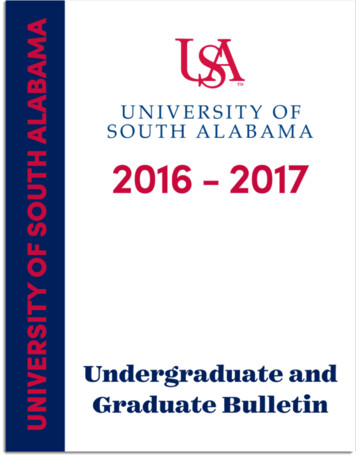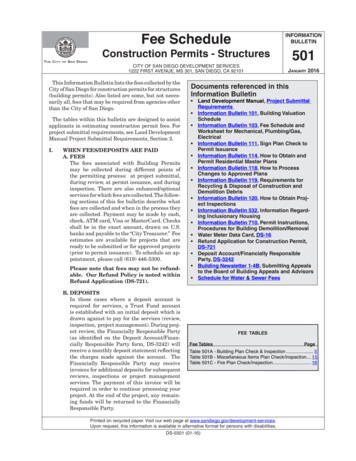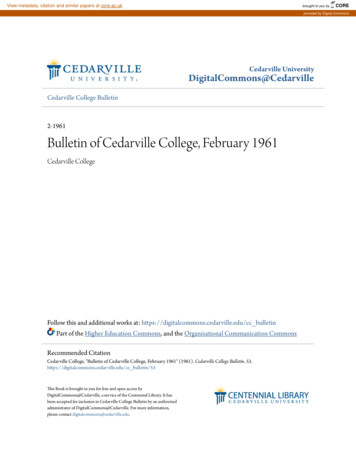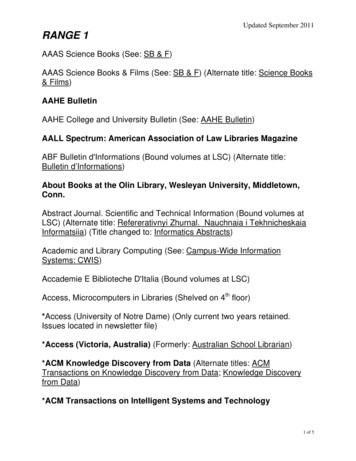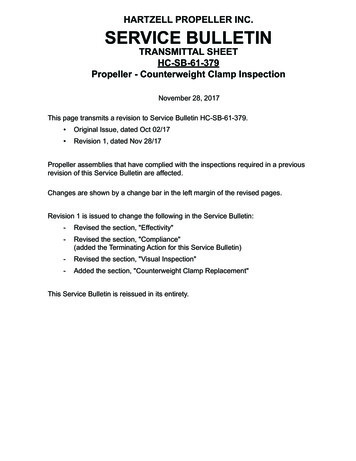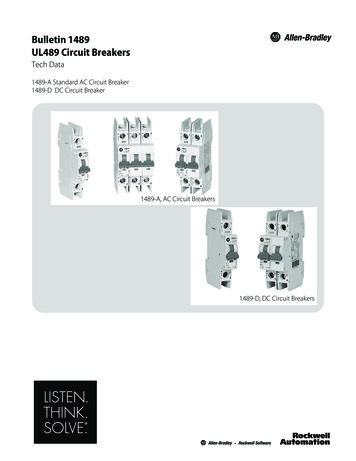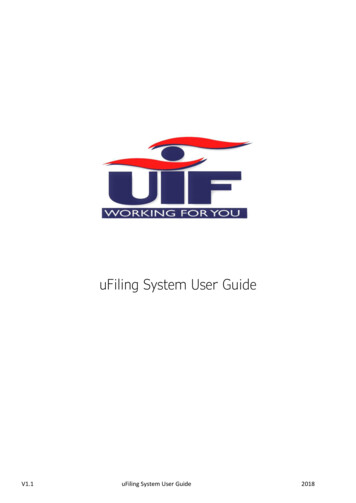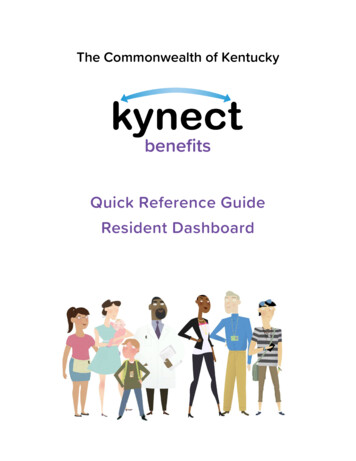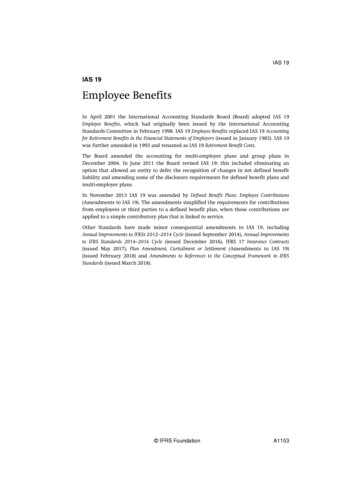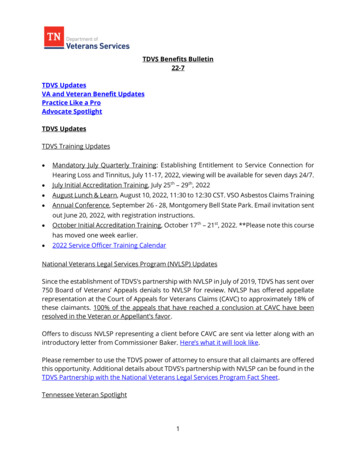
Transcription
TDVS Benefits Bulletin22-7TDVS UpdatesVA and Veteran Benefit UpdatesPractice Like a ProAdvocate SpotlightTDVS UpdatesTDVS Training Updates Mandatory July Quarterly Training: Establishing Entitlement to Service Connection forHearing Loss and Tinnitus, July 11-17, 2022, viewing will be available for seven days 24/7. July Initial Accreditation Training, July 25th – 29th, 2022 August Lunch & Learn, August 10, 2022, 11:30 to 12:30 CST. VSO Asbestos Claims Training Annual Conference, September 26 - 28, Montgomery Bell State Park. Email invitation sentout June 20, 2022, with registration instructions. October Initial Accreditation Training, October 17th – 21st, 2022. **Please note this coursehas moved one week earlier. 2022 Service Officer Training CalendarNational Veterans Legal Services Program (NVLSP) UpdatesSince the establishment of TDVS’s partnership with NVLSP in July of 2019, TDVS has sent over750 Board of Veterans’ Appeals denials to NVLSP for review. NVLSP has offered appellaterepresentation at the Court of Appeals for Veterans Claims (CAVC) to approximately 18% ofthese claimants. 100% of the appeals that have reached a conclusion at CAVC have beenresolved in the Veteran or Appellant’s favor.Offers to discuss NVLSP representing a client before CAVC are sent via letter along with anintroductory letter from Commissioner Baker. Here’s what it will look like.Please remember to use the TDVS power of attorney to ensure that all claimants are offeredthis opportunity. Additional details about TDVS’s partnership with NVLSP can be found in theTDVS Partnership with the National Veterans Legal Services Program Fact Sheet.Tennessee Veteran Spotlight1
Check out the first video in the three-part Tennessee Veteran Spotlight with Captain BarbaraBell.Tennessee Veteran Spotlight - Barbara Bell, CAPT US Navy (Ret.) - Part 1VA and Veteran Benefit UpdatesDebt Management Center UpdatesIn June, VHA launched a streamlined and simplified application and approval process formedical debt relief. Objective income threshold criteria will now be used for the processing andconsideration of debt relief.Supplemental documents to support requests will no longer be recommended for initialsubmission of applications.Patient statements are mailed monthly or can be viewed online -o Https://eauth.va.gov/accessvao https://www.va.gov/manage-va-debtSimplified Medical Debt Relief Application Process for Veterans FAQsThis application and approval process for medical debt relief is part of VA’s larger regulatoryeffort, highlighted in Benefits Bulletin 22-2 and explained by the Consumer Financial2
Protection Bureau, to provide additional protections to the most financially vulnerableVeterans.DMC’s presentation at TDVS’s 2022 Spring Regional Quarterly Training has additionalupdates and resources. Also, don’t forget that DMC has a dedicated phone line for VSO’s -612-970-5737 – to assist with urgent debt issues.Honoring Our PACT ActCongress is considering legislation, Honoring Our PACT Act of 2022, that would significantlyexpand access to health care and benefits for Veterans with toxic exposure injuries.There’s significant momentum behind this legislation and the President has indicated hewould sign it. NVLSP is working on a curriculum and TDVS anticipates providing training onthis legislation at TDVS’s Annual Conference in September.Asset and Infrastructure Review CommissionBenefits Bulletin 22-4 provided background on the Secretary’s recommendations to theAsset and Infrastructure Review or AIR Commission, which was a component of the VAMISSION Act of 2018. On July 27th, a bipartisan group of Senators, effectively stopped theasset and infrastructure review process outlined by the MISSION Act.Practice Like a ProHigher Level Review and Informal ConferenceBenefits Bulletin 21-11 highlighted that TDVS Appeals Division’s customer services includesproviding oral advocacy in support of Veterans and claimants and offered several tips toensure your clients receive the benefit of Appeals Division advocacy during their informalconference.VBA’s Office of Administrative Review recently provided information on informal conferencesin a Vantage Point Blog Post and Informal Conference Fact Sheet. It emphasized that thepurpose of a higher-level review is to correct an error of fact or law in a VA decision.PRACTICE TIP.When filing a higher-level review (VA Form 20-0996) use a VA Form 21-4138 toidentify or articulate the error of fact or law in the previous VA decision. You can also useVetraSpec communication notes to identify the error or fact or law and an Appeals Divisionteam member would be happy to assist in crafting an argument. Here are some examples 3
Please contact the Appeals Division if you’d like to participate in preparation for or observean informal conference.Counseling a veteran on how to disagree with a VA decision is complex. If you catch themistake immediately, you might use the Claim Accuracy Request process. A veteran mightdisagree with one of Appeals Modernization Act’s three options – supplemental claim;higher-level review; or appeal to BVA. TDVS’s Appeals Division team is always available tohelp you weigh the pros and cons – such as the time it might take for a decision and likelihoodof success -- of the various methods a veteran might use to disagree with a VA decision.VA’s Appeals Modernization Fact Sheet is a good visual tool to help clients understand theoptions for disagreeing with a VA decision. It also provides basic considerations to assist incounseling clients on which lane is right for them.In addition, BVA’s Office of Administrative Review or OAR has provided several tools includingAMA and Decision Review Options Communications Toolkit as part of its Appeals4
Modernization Act or AMA education campaign to promote greater understanding of thedecision review options available under the AMA.Advocacy Tips – Back to BasicsIn May, TDVS began an Advocacy Tips series to help you practice like a pro by providing basicadvocacy tips on: I’m a Service Officer.Now What? That series continued last month byproviding advocacy tips on connecting the dots beginning with how to review a VA claim file.The series continues this month with tips for obtaining military records and information tohelp substantiate a claim.(1) I’m a Service Officer.Now What?(2) Connecting the Dots(a) How to review a VA claim file;(b) Obtaining Military Records and Information to Help Substantiate a Claim.(c) Effective Advocacy Before VA.Part III: Obtaining Military Records and Information to Help Substantiate a ClaimInformation is taken in part from the National Veterans Legal Services Program (NVLSP) VeteransBenefits Manual, 2021-22 edition.Last month’s Benefits Bulletin, highlighted the first step in connecting the dots – reviewing aVA claim file and identifying all potential VA benefits to which the claimant may be entitled.Advocacy Tip – Although it might be possible to give a claimant general advice about VAbenefits without first seeing any records, you can’t fully advise a claimant without reviewinghis or her relevant records.That’s why TDVS facilitates access to several VA Systems, such as VBMS, SHARE and Caseflow,necessary to review a VA claims file. Here are step-by-step instructions for using your PIV toaccess VA Systems. TDVS has also provided training on how to use SHARE and Caseflow(December 2021 Lunch and Learn).Once the file has been reviewed, let’s connect to the second dot – obtaining military recordsand other information to help substantiate a claim.Military Personnel and Treatment Records – The law requires VA to develop a claim and toobtain all relevant records that are in the custody of a federal agency or department, whichincludes military personnel and treatment records. Although these are records in federalpossession and require VA development, assisting a claimant in obtaining these records5
before filing a claim can not only help you provide better counsel but may also speed deliveryof benefits. Advocacy Tip – Benefits Bulletin 22-1 and an accompanying TDVS Fact Sheetprovided tools and resources available to accredited service officers (i.e. Tennessee WarRecords, DPRIS, etc.) to support military records requests. Thanks to the Knox County CSOOffice, here is a contact list for state and local governments that might also be able to helpobtain a discharge document.VA Records – As discussed, access to VA systems can facilitate reviewing a VA claims file.Veterans and advocates can also request a copy of the VA claims file using VA Form 20-10206,Freedom of Information Act (FOIA) or Privacy Act Request. This form is not required and awritten request, such as a VA Form 21-4138, will also suffice. A VA Form 20-3288 may be usedto request VA medical records that are not part of the VA claims file.Developing for Medical Evidence –1. Private Medical Evidence - A passionate advocate will aid the claimant in seeking to obtainprivate treatment records by identifying Release of Information (ROI) procedures associatedwith a private provider. Advocacy Tip – It is often easier and faster for a claimant to obtainprivate treatment records than submitting the VA Form 21-4142 and 4142a. A good advocatecan work with and guide the claimant and private provider to gain needed records.Benefit Bulletin 22-4 provided several Advocacy Tips related to private medical evidenceand use of the VA Form 21-4142 and 4142a to allow VA to develop for private medicalevidence.2. Disability Benefit Questionnaires or DBQs – DBQs are a useful tool when obtaining privatemedical evidence because they are designed to gather the information VA needs todetermine service-connection and evaluate the severity of a disability. DBQs are publiclyavailable and should be reviewed before submission to VA. Remember, if the private medicalevidence is negative you should not submit it to VA.3. Nexus Opinions – Here are several Advocacy Tips to avoid VA rejecting private medicalopinions:--The examiner should review and state they reviewed the claims file or at least theVeterans service treatment records in rendering an opinion.The examiner should provide a detailed rationale that references the evidence in theclaims file as well as commonly agreed upon medical principles. It’s also helpful if theexaminer references medical treatise or texts as discussed below.The examiner should provide details regarding his or her credentials.6
-The examiner should use terminology to capture the correct burden of proof for VAclaims – “as least as likely as not.”4. Medical Treatise or Texts – Benefits Bulletin 22-6 discussed the benefits of providingjournal articles or other medical literature as evidence in support of a claim.TDVS’s Training Officer and Appeals Division personnel are available to support in-personindividual or small group trainings on these and other topics to ensure you’re practicing likea pro.Next time we’ll provide several strategics for effective advocacy before VA.Advocate SpotlightBack to Basics Results in Retroactive Award (Again)Entitlement to disability compensation requires three items – 1. Current Disability; 2. Inservice Event or Injury; 3. Nexus or Linkage. Identifying the missing evidence and helping theVeteran obtain military records or other information to help substantiate a claim are vital forsuccessful advocacy.In this case, a peacetime Veteran applied for disability compensation in 2015 using a directservice connection theory that he was entitled to service connection for diabetes mellitusand several disabilities secondary to diabetes. VA denied his claim in June of 2016. TheVeteran appealed, using the legacy appeals process, and was afforded a hearing in July of2020. At the hearing, the Veteran provided lay evidence in the form of testimony about anincident in service when he passed out, was taken to the infirmary, and told that his glucoselevel was very high. He was discharged with medication, placed on a diet regimen, and toldto return. However, before he could return, he was sent back to his reserve unit. The Veteranargued that the high blood sugar in service was a precursor to his post service diagnosis ofdiabetes.Based in part on the additional evidence (lay testimony) provided during the hearing, BVAremanded several issues to obtain a medical opinion to address the nature and etiology ofhis diabetes mellitus. In this appeal, the Veteran and his advocate identified the missingevidence (in-service event or injury and nexus) by using lay evidence to describe symptomsduring service, which supported a later diagnosis and nexus opinion by a medicalprofessional.VA’s Office of Administrative Review recently completed work on the remand. It awardedservice connection with an effective date of 2015 and provided retroactive benefits of over7
250,000. Getting back to basics by identifying and helping the Veteran obtain the missingevidence made all the difference for this Veteran.Our goal as advocates should be identify the missing evidence and help the Veteran obtainthe information necessary to substantiate a claim at the earliest stage in the claims process.Getting back to basics will help us meet that goal.If you have an example of teamwork between Veteran service offices/organizations across thestate making a difference in the lives of Tennessee veterans, please share with your RegionalDirector for possible inclusion in an upcoming “Advocate Spotlight.”TDVS Benefits Bulletins Can Be Found on the VSO Tools Portion of TDVS’s WebsiteFollow TDVS on social media:Facebook Twitter LinkedIn Instagram8
612-970-5737 - to assist with urgent debt issues. Honoring Our PACT Act Congress is considering legislation, Honoring Our PACT Act of 2022, that would significantly expand access to health care and benefits for Veterans with toxic exposure injuries. There's significant momentum behind this legislation and the President has indicated he
